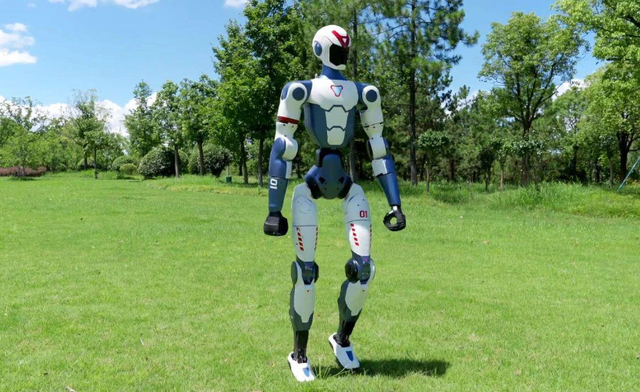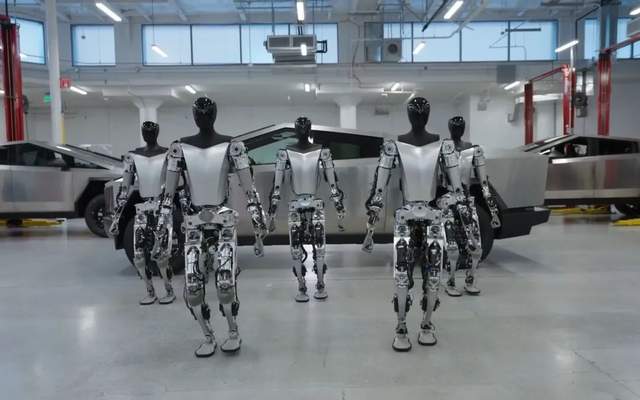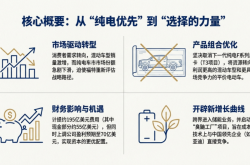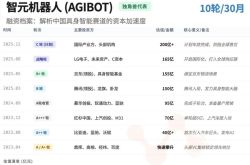The Arrival of the $39,900 Humanoid Robot: How Soon Will the 'Robot Tax' Follow?
![]() 08/13 2025
08/13 2025
![]() 431
431
At the 2025 World Robot Conference, Wang Xingxing, founder of Unitree Robotics, told media in an interview, "In the future, when robots can perform a myriad of human tasks, the state will inevitably inform companies that I will impose taxes on every robot leaving the factory."
This isn't a far-fetched sci-fi notion. Less than two years ago, humanoid robots were merely dancing stars on the Spring Festival Gala stage in the public eye. Back then, the Unitree H1, priced at 650,000 yuan, served more as a symbol of technological advancement rather than a workforce on the production line.
Today, the selling price of the Unitree R1 has plummeted to 39,900 yuan, roughly equivalent to the cost of an affordable electric car.
'Automation replacing manpower' is transitioning from a concept to a tangible reality.
Simultaneously, international market expectations continue to soar. Morgan Stanley's latest report predicts that by 2050, the global 'humanoid robot market' will exceed $5 trillion, with nearly 1 billion units in circulation. This implies that in the coming decades, we will witness a wave of technological substitution akin to the Industrial Revolution and the proliferation of the internet.
Against this technological backdrop, as robots become increasingly capable of performing human tasks, the imposition of a 'robot tax' is imminent. What implications does this hold for China's manufacturing industry?
Price Decline: Technological Dividends Begin to Unfold
Over the past five years, the protagonists of automation in China's manufacturing industry have been 'robotic arms' and 'production line transformations'. However, starting from 2024, the popularity of humanoid robots has surged, fueled not only by media attention but also by a drastic drop in hardware prices.
• In 2023, the Unitree H1 sold for 650,000 yuan;
• In 2024, the price of the G1 dropped to 99,000 yuan;
• At the beginning of 2025, the starting price of the R1 was 39,900 yuan.

Such a price reduction is rare even in the consumer electronics industry, let alone the nascent humanoid robot market.
According to the latest data from Tianyancha, since 2023, the number of enterprises registered to manufacture humanoid robots and related components has increased by 45% annually, reaching nearly 1,200. Notably, Guangdong, Jiangsu, and Shanghai exhibit significant agglomeration effects, accounting for over 40% of the overall market share. This not only reflects the rapid expansion of the industrial chain but also hints at the emerging mass production capabilities.
The price decline of humanoid robots is underpinned by three concurrent overlapping effects:
1. Mass Production: As more manufacturers enter the market, the production of humanoid robot components, assembly, and testing begins to scale up.
2. Localization of Components: Early reliance on imported high-precision servo motors, sensors, and reducers is gradually being replaced by local supply chains, significantly cutting costs.
3. Adaptation of Local AI Models: In core areas like motion control, speech understanding, and visual recognition, domestic large models combined with local computing power enable robots to accomplish more tasks without expensive cloud reasoning.
If we draw parallels from the historical penetration curve of industrial robots, once the price enters the 'psychological comfort zone', industry penetration tends to increase exponentially. In 2015, China's industrial robot penetration rate was only 36 units per 10,000 workers, but by 2023, it had reached 392 units, completing the path that took Japan and South Korea 20 years in just 8 years.
Compared to industrial robots, humanoid robots boast natural advantages in mobility and task flexibility. Once they break through key application scenarios such as logistics handling, maintenance, and assembly, their growth curve may surpass that of industrial robots. The price drop not only means that more companies can afford them but also suggests that R&D companies can gather data more swiftly through iterations, forming a technological closed loop and further promoting a virtuous cycle of performance and cost.
This convergence of technological and cost dividends has swiftly propelled the industry from the 'conceptual stage' to the 'application explosion stage'. At this juncture, the market's focus has shifted from 'whether it can be done' to 'how much and how fast it can be done'. After the release of price dividends, when will humanoid robots truly infiltrate factories to replace humans in high-risk, high-intensity positions?
The Tipping Point for Application Implementation is Approaching
Humanoid robots have gained popularity over the past two years, yet they haven't truly commenced 'working' on a large scale. Currently, what we predominantly see in videos and exhibitions are performances and demonstrations, partly due to audience preferences and partly because there are still three major hurdles for humanoid robots to replace human labor in actual production environments: task complexity, operational stability, and investment return period.
Over the past two years, the industry's assessment of the implementation pace has significantly accelerated. On one hand, technological breakthroughs are shortening the debugging cycle. Taking logistics handling as an example, traditional industrial robots need to preset trajectories for each workstation, whereas humanoid robots can adjust their movements in real-time based on visual and tactile feedback. This implies they can integrate into existing work environments without extensive production line modifications.
On the other hand, companies' attitudes towards pilot projects are also evolving. Products like Unitree Robotics' R1, Tesla's Optimus, and Toyota's T-HR3 have commenced entering the 'real-world' testing phase in industries such as manufacturing, warehousing, and healthcare. In an interview with media, Unitree revealed that domestic auto parts factories have already deployed R1 for material handling and simple assembly, replacing two night shift workers, and the payback period for one machine has been compressed to within 18 months.

This shift in ROI is pivotal for corporate decision-making. Past investments in industrial robots often required a payback period of 3 to 5 years, but once humanoid robots reduce the payback period to within 2 years, demand will no longer hinge on 'whether it's worth trying' but will become 'how to deploy more as soon as possible'.
From a competitive standpoint, the layout of domestic humanoid robot manufacturers is forming two distinct paths:
• There are full-stack players like Unitree Robotics and UBTECH, which conduct integrated R&D from hardware to AI models, attempting to establish end-to-end product barriers.
• There are also modular suppliers like CloudMinds and Hesai Technology, which focus on single points such as sensors and actuators, cutting into the supply chains of multiple OEMs at lower costs.
This division of labor accelerates product maturity in the industry while minimizing the cost of trial and error for individual companies. Just as in the smartphone industry in 2010, once component costs and performance are standardized, product iterations will accelerate, and application scenarios will explode in a short period of time.
Therefore, the true tipping point isn't the technology itself but when multiple companies achieve positive ROIs in pilot projects across multiple industries, and the supply chain can simultaneously meet the demand for mass production. At this juncture, the market will swiftly transition from 'concept' to 'rigid demand'.
The first round of industry reshuffling may be completed based on mass production capacity and channel layout rather than in laboratories. Manufacturers like Unitree, on one hand, leverage price to capture the market and, on the other hand, diversify risks through overseas expansion. This also suggests that the future leading humanoid robot company in China is likely to first dominate the global market and then feed back to domestic demand.
Once the Tipping Point is Breached, Growth will be Exponential
Morgan Stanley's prediction is merely the tip of the iceberg. By 2050, the global humanoid robot market of $5 trillion will entail the annual production and deployment of millions of additional units. However, for manufacturers, the deciding factor isn't 'whether to do it' but who can occupy the commanding heights of production capacity and supply chains on the eve of the explosion.
Historically, when the prices of industrial robots in Japan and South Korea fell below 1.5 times per capita GDP, the penetration curve witnessed an inflection point, completing the transition from 'limited trials' to 'industry-wide adoption' within 3 to 5 years. In China, between 2016 and 2021, the price of industrial robots dropped by approximately 30%, and shipments increased nearly threefold; once prices continue to decline, the reaction in the incremental market will be swifter than in Japan and South Korea.
Therefore, referencing the development trajectory of industrial robots, the acceleration conditions for the humanoid robot market are more sensitive. Humanoid robots exhibit high cross-industry portability, and the same robot can switch between different vertical fields by simply altering task algorithms and end tools, significantly reducing expansion costs. Meanwhile, the iteration speed of AI and the upgrade of embodied intelligence models aren't constrained by hardware modifications but rely more on computing power and algorithm optimization, implying that the speed of performance improvement may approach that of consumer electronics.
Currently, the annual production capacity of leading domestic humanoid robot manufacturers is still in the tens of thousands, but driven by both the capital market and OEMs, it is anticipated that the total industry capacity will exceed one million units by 2027. By then, even if calculated based on low-end models priced at 30,000 yuan each, the market size will approximate 30 billion yuan, and this figure only accounts for basic models that 'perform physical labor', excluding high value-added fields such as healthcare, services, and military.
More importantly, industry differentiation will become apparent in the early stages of the explosion:
• Enterprises with full-stack R&D capabilities will lock in high value-added and complex task scenarios, forming a high-margin range.
• Manufacturers focusing on low-cost, popular robots will compete for market share through scale and channels, adhering to a path of small profits but quick turnover.
• Suppliers of components and AI models may become the most profitable links, akin to players in the smartphone industry chain who manufacture screens, chips, and operating systems.
Under this structure, the 'robot tax' won't merely be a policy topic but will become an integral part of the industry's cost structure, compelling companies to make more aggressive choices in pricing, deployment pace, and global market layout. In other words, the real competition doesn't unfold at the conference venue but in the supply chain lock-in battle on the eve of the explosion.
When the three curves of price, capacity, and ROI simultaneously cross the threshold, humanoid robots will penetrate various industries at an exponential rate, leaving less than two years for latecomers.
Today's $39,900 may foreshadow the future moment of the '10,000 yuan smartphone'. Once the threshold is crossed, what remains is exponential replication, and the 'robot tax' may become a daily occurrence in the future.
Disclaimer: This article presents comments based on the company's statutory disclosure content and publicly available information, but the author does not guarantee the completeness or timeliness of this information.
Additionally: The stock market is risky, and investors should exercise caution. This article does not constitute investment advice, and investors must make their own judgments regarding investments.






